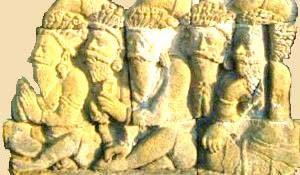|
||||||||||
why chant Pali?For 2,500 years, narratives about and statements attributed to the Buddha and his disciples have been recited by monastics and lay devotees as a means of deepening their own practice, teaching others and preserving the Buddha's wisdom for future generations. Over time, these accounts have been collected and preserved in various languages such as Chinese, Japanese, Tibetan and English. Pali is an ancient Indian dialect close to the Buddha's own. It is the language of Buddhism's oldest extant scriptural collection, the "Pali Canon," wholly embraced by Theravadin Buddhists and represented in parts in the canons of other Buddhist schools. Chanting Pali connects us with countless voices, minds and hearts spanning the globe, millennia past and our communal future. It enables our body and mind to become concentrated, bright and pliant while reinforcing wholesome thoughts and aspirations. It perpetuates ancient wisdom. It gives expression to a practitioner's naturally arising gratitude. site overviewThis site combines audio recordings of traditional chanting with the associated Pali text, an English translation, and a Pali-to-English glossary. The recordings are broken into verses, lines and phrases to facilitate auditory memorization. The Pali text is broken into stressed and unstressed syllables to simplify pronunciation. The English translation and glossary provide the meaning of each chanted word. chanting guidesTo the left are the titles of traditional Pali chants which often form a common core to various contemporary liturgies. They have been selected so as to be meaningful to a solitary practitioner as well as to facilitate a practitioner's participating comfortably in traditional communal events. Click on a title to access the associated tunes, text and translations. (For an index of more modular chanting guides with fewer features, appropriate for those who have gained familiarity with a chant's Pali words or for those using a mobile device, go here. Alternately, click on the compact view button associated with any chant. For more information regarding "compact-view" vs. "expanded-view" chanting guides, see here.) |
||||||||||
|
Tiloka-dīpaṃ sambuddhaṃ ~ pūjayāmi tamo-nudaṃ |
last modified: 9 December 2009 |

